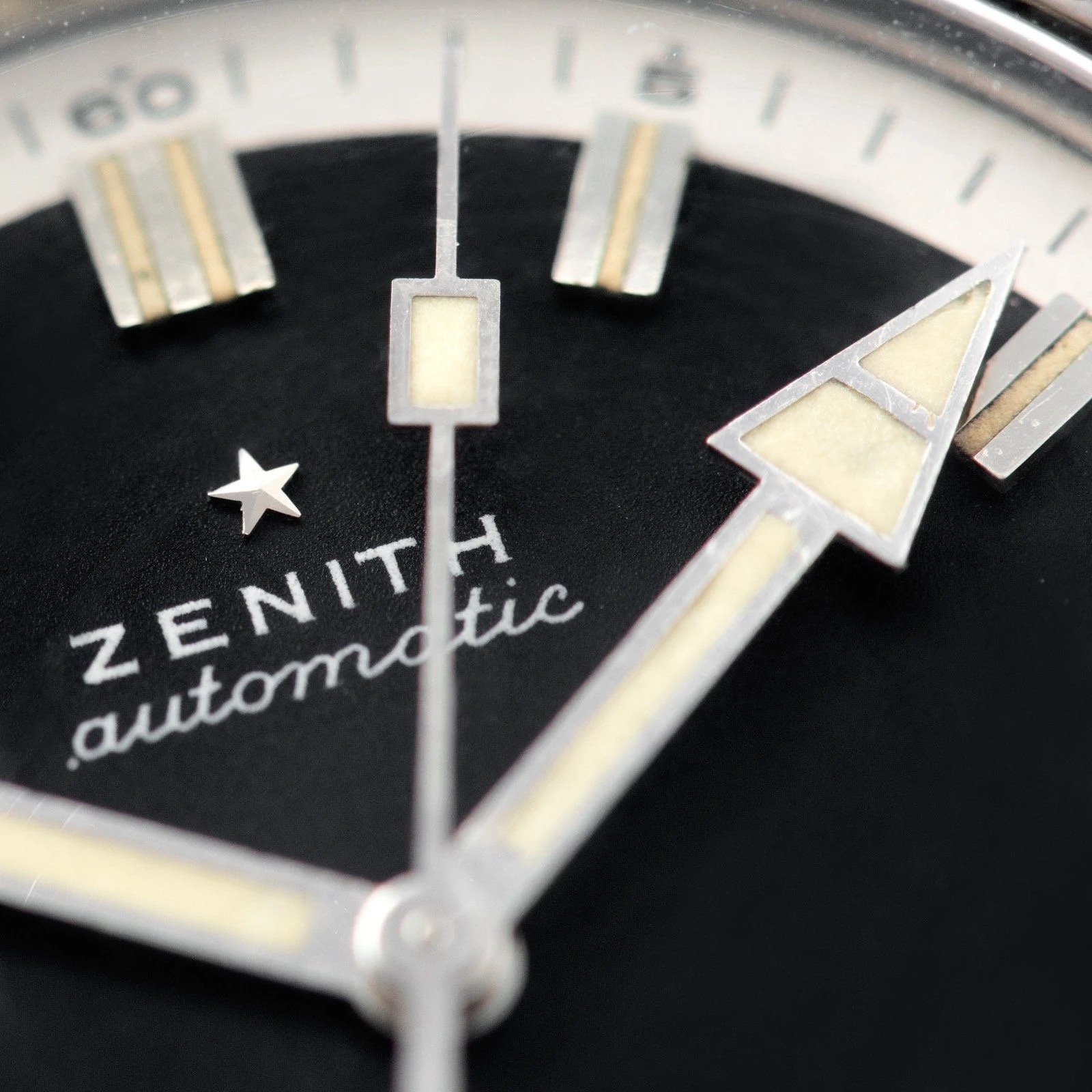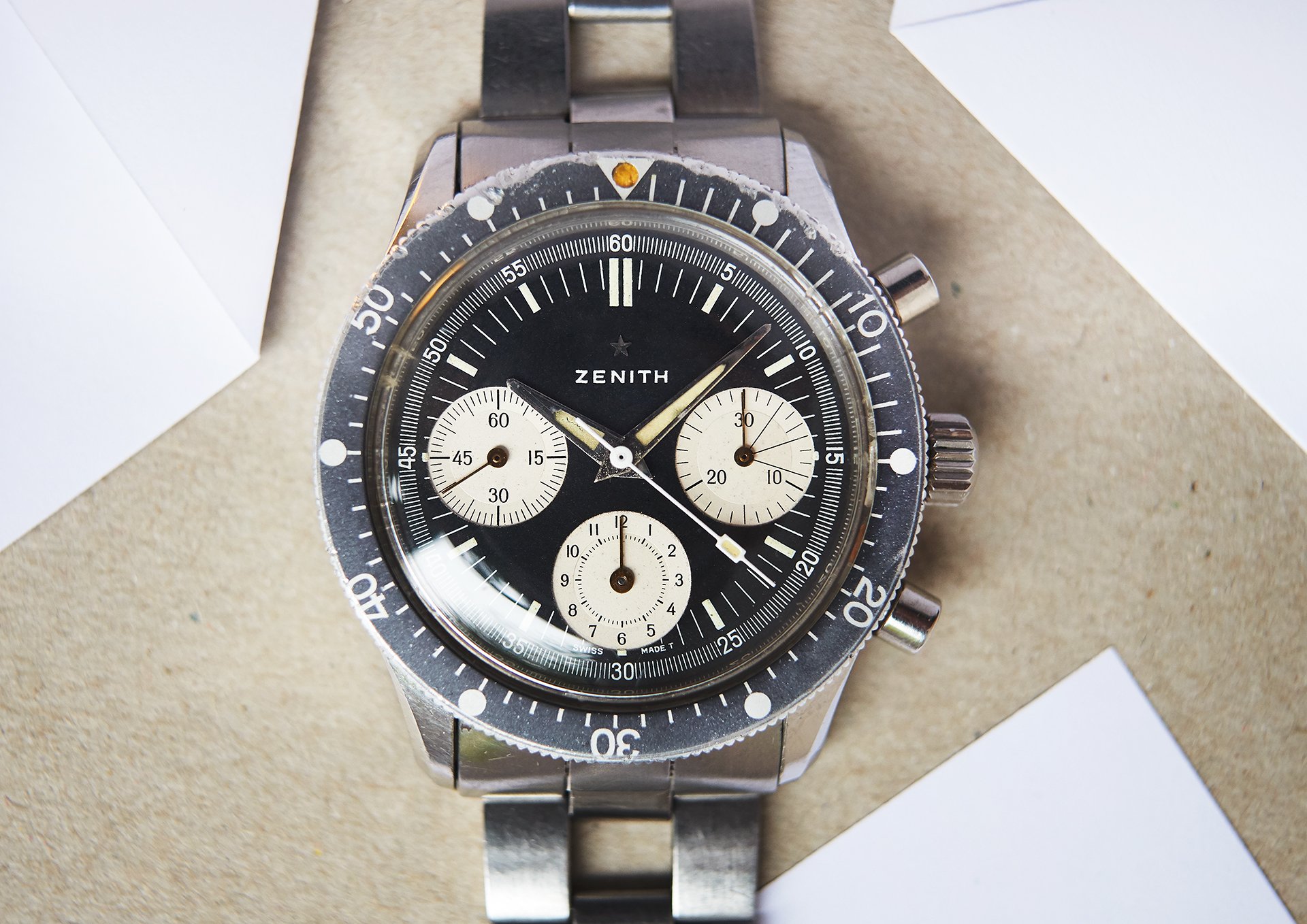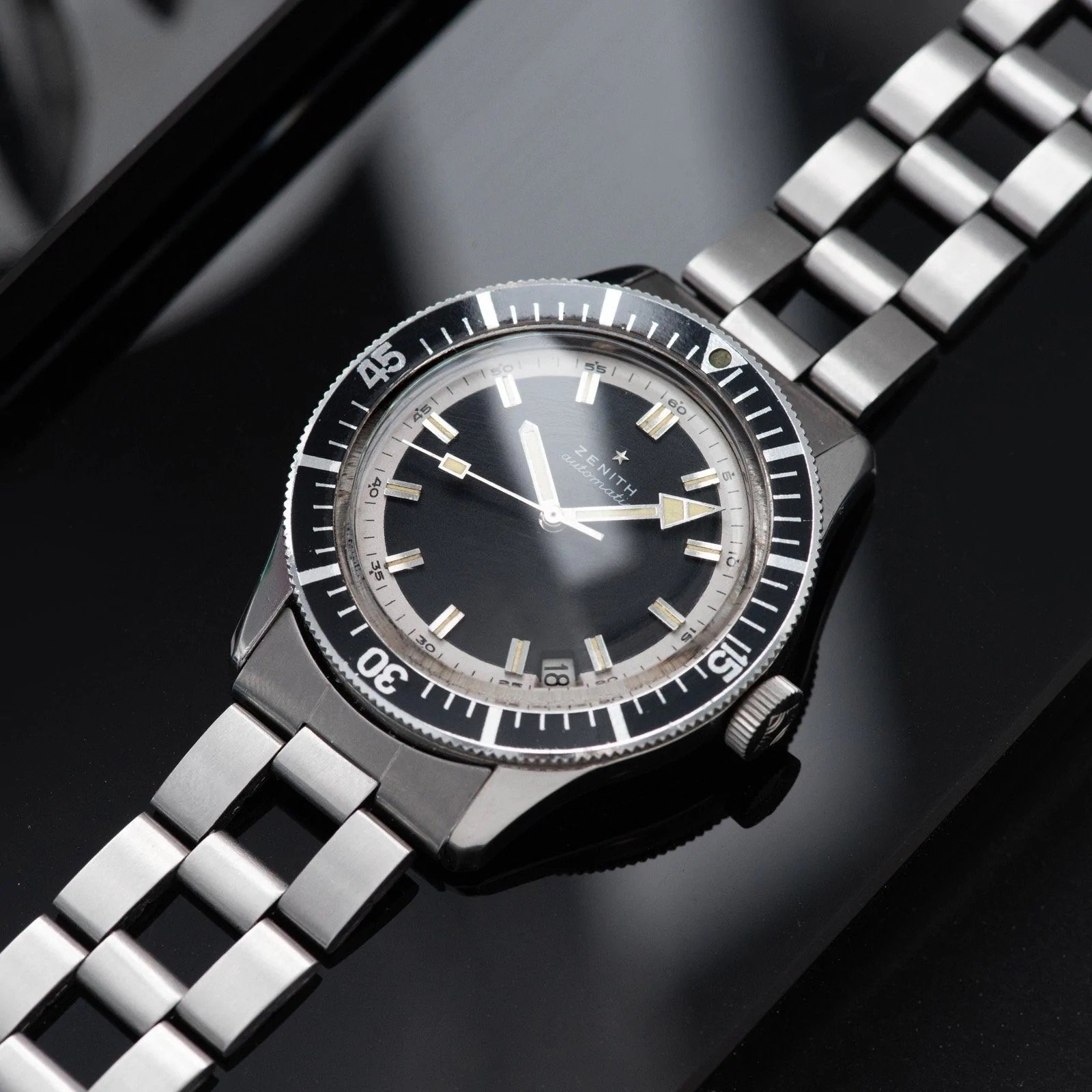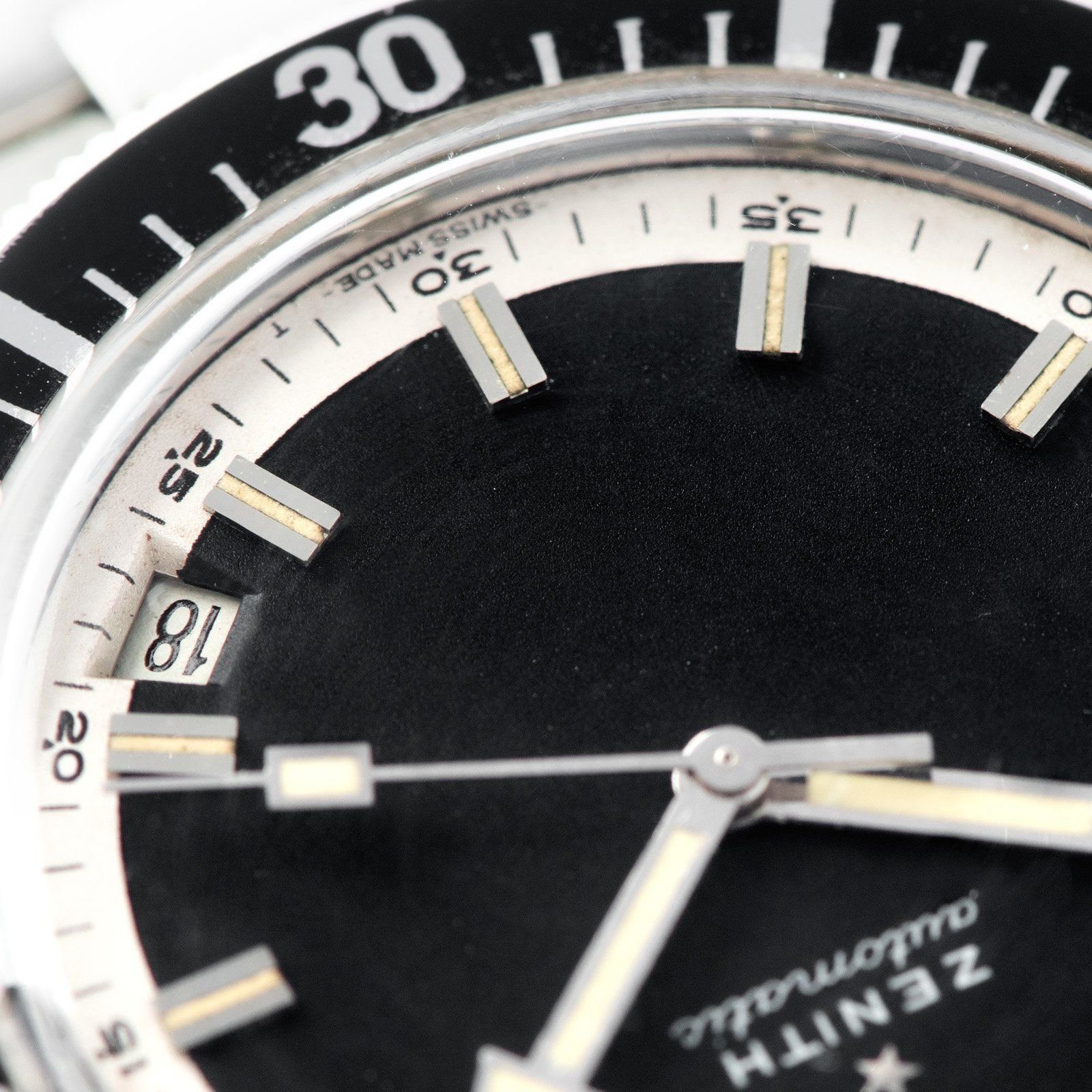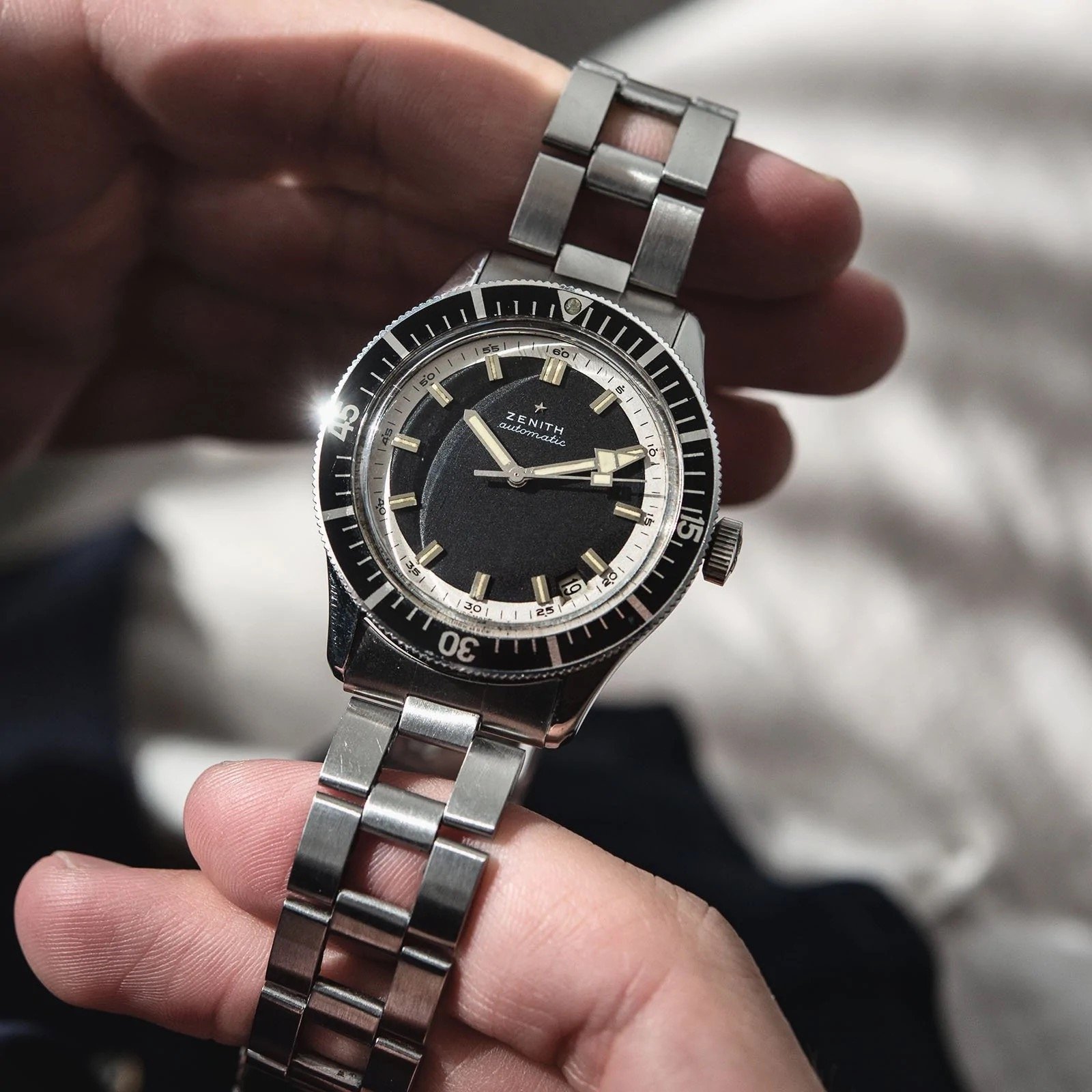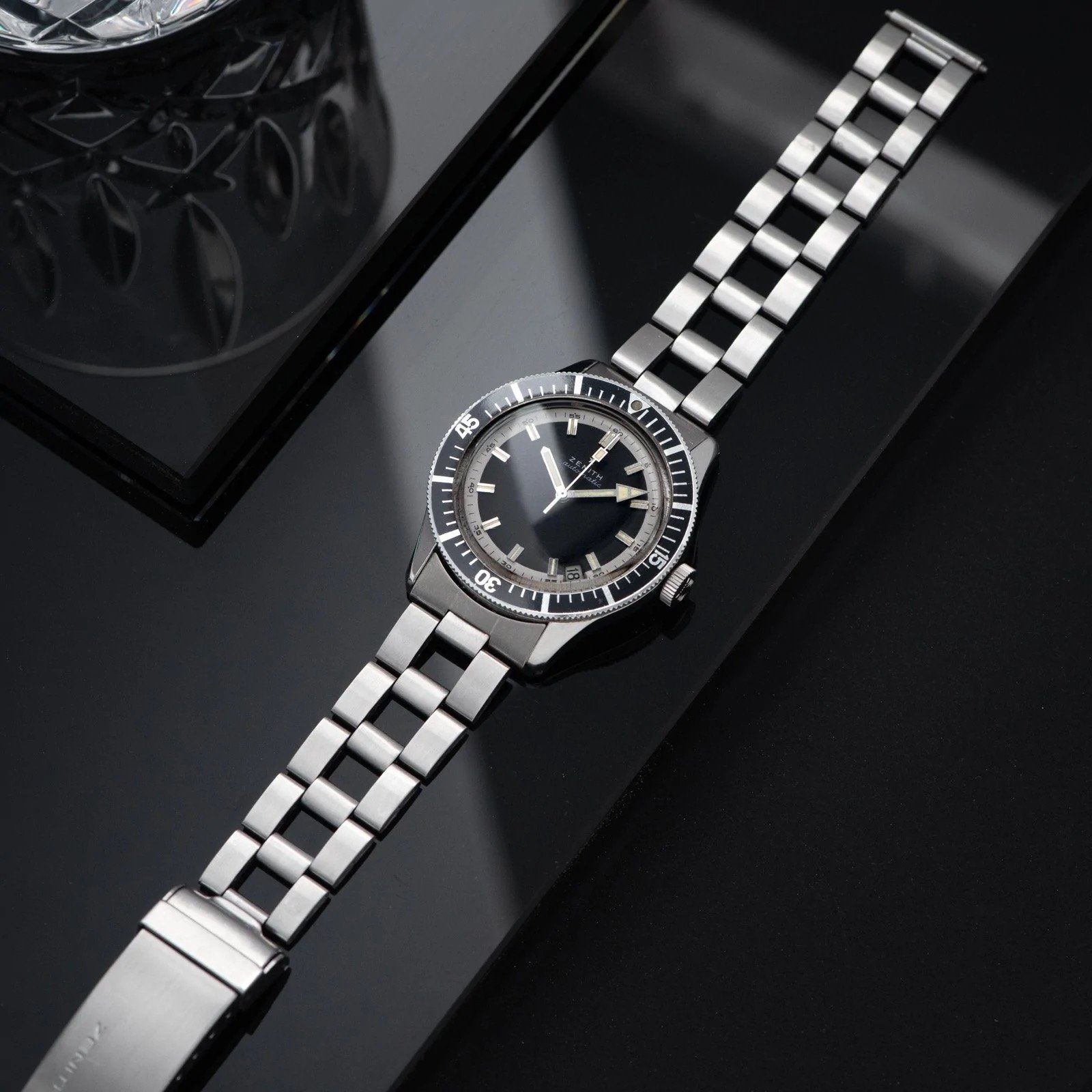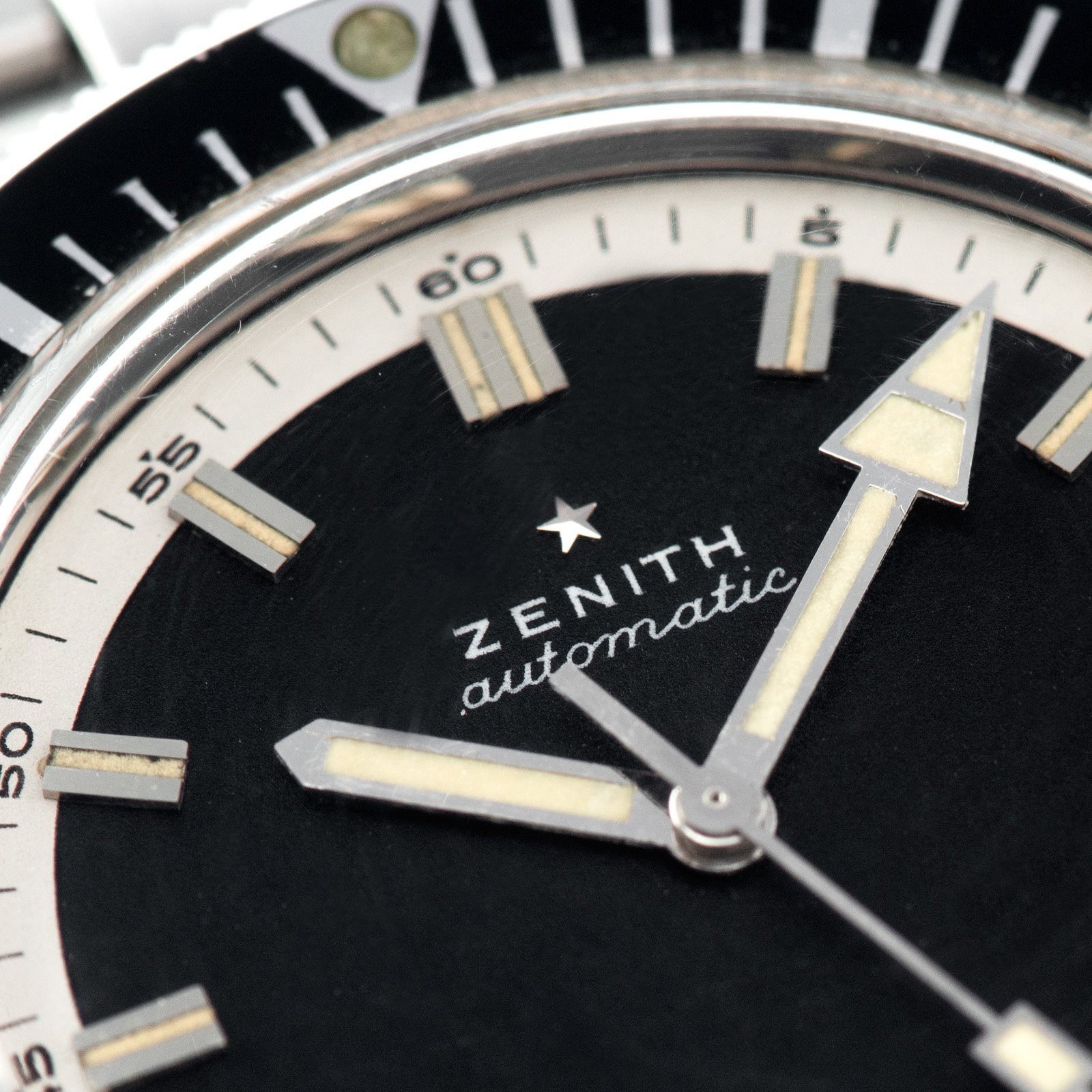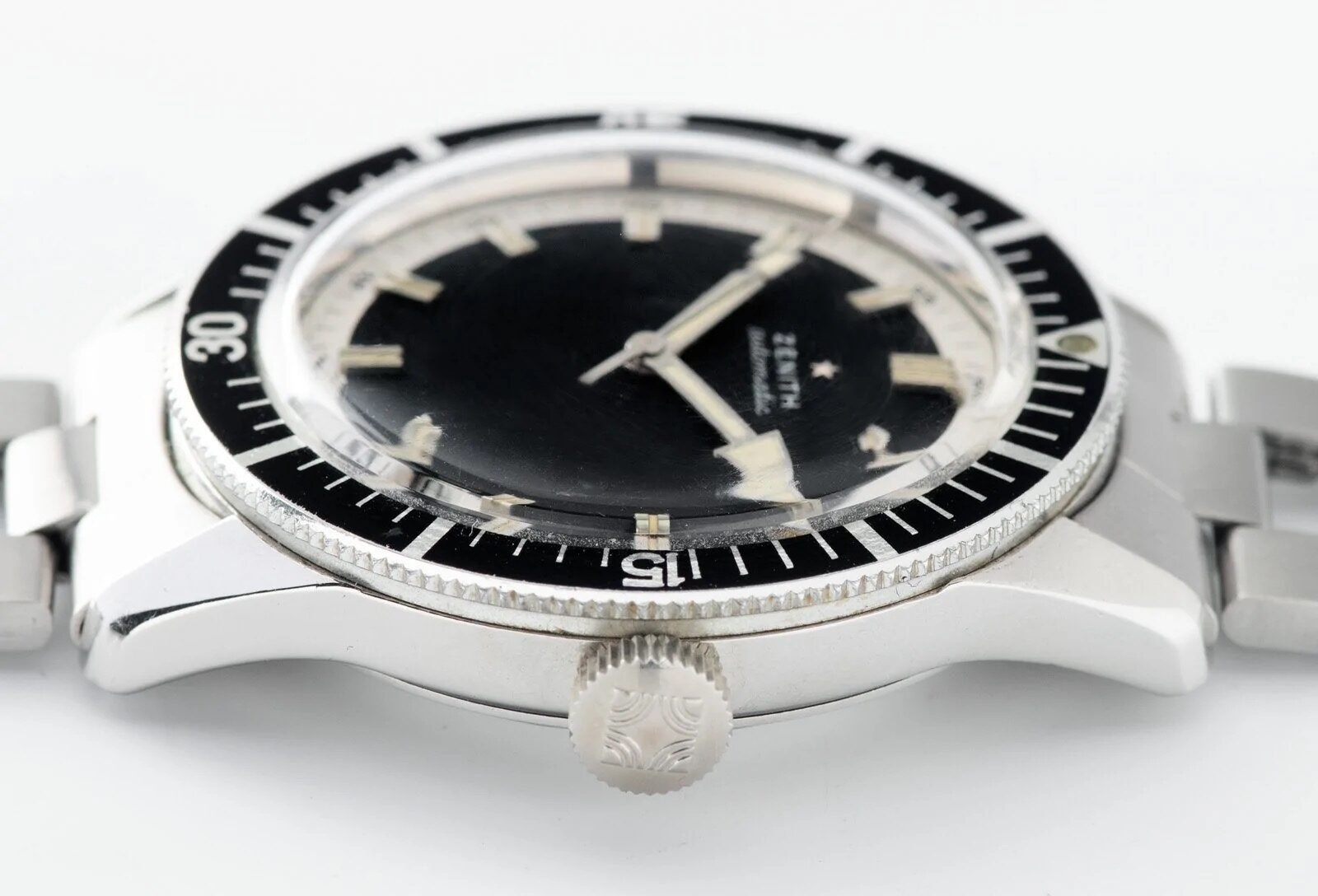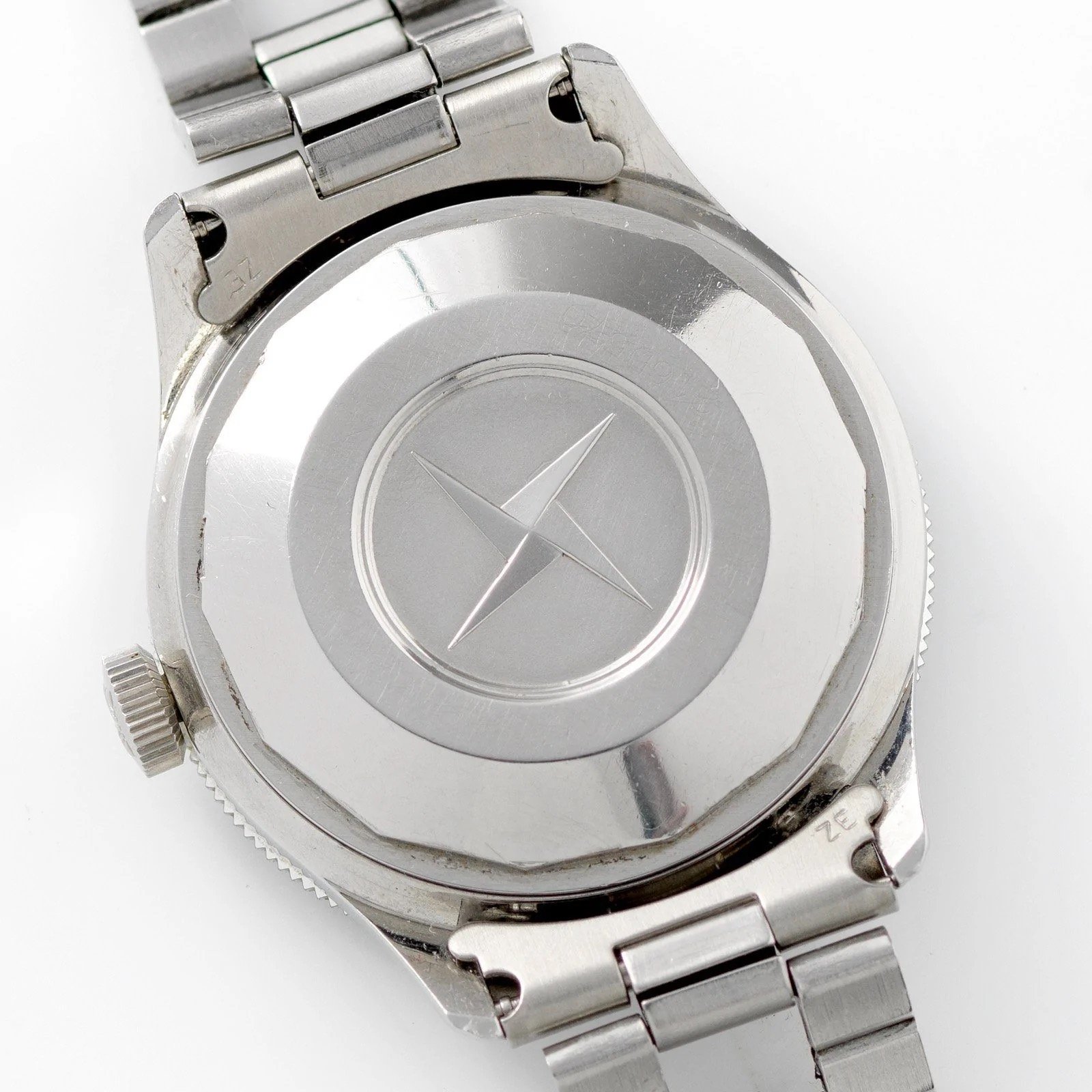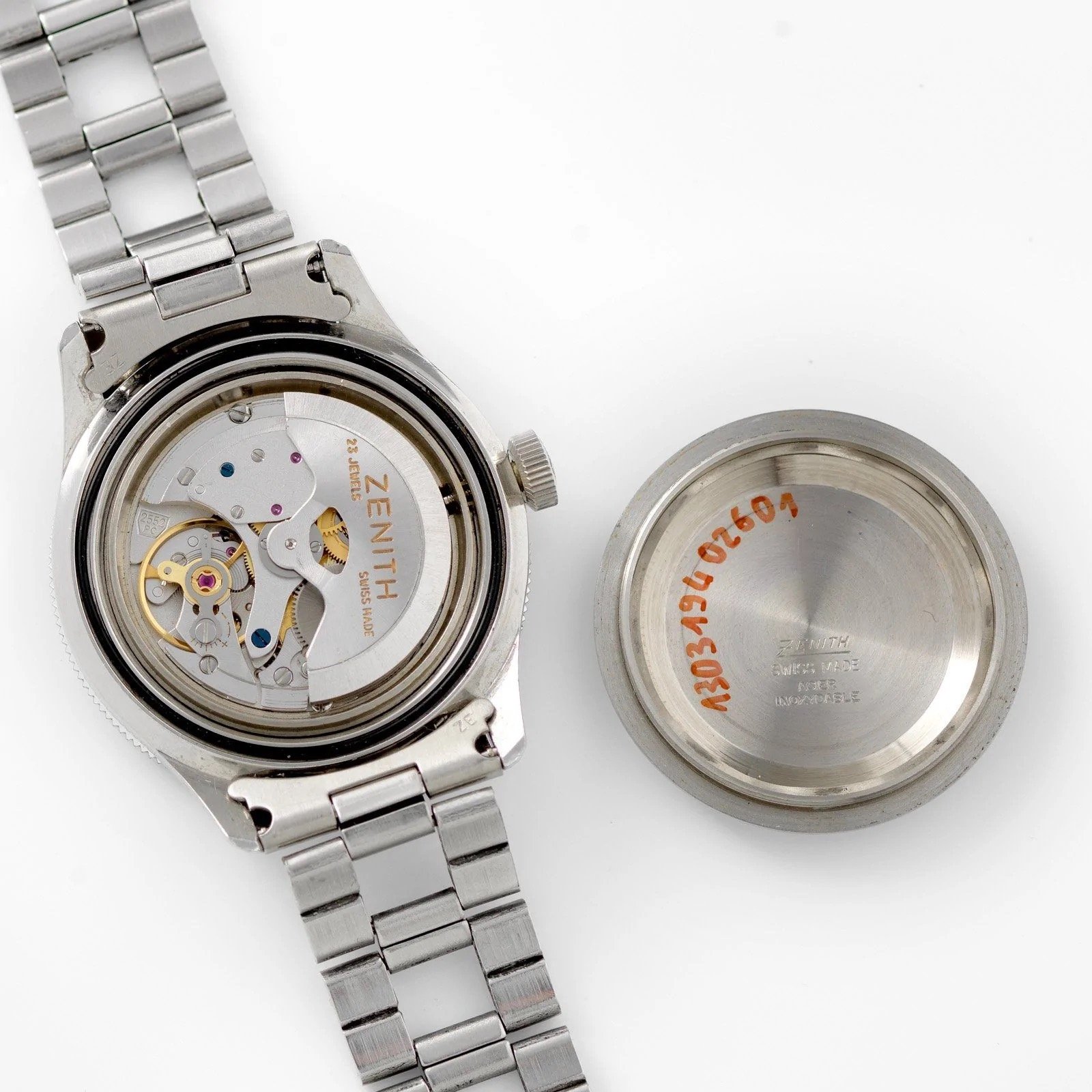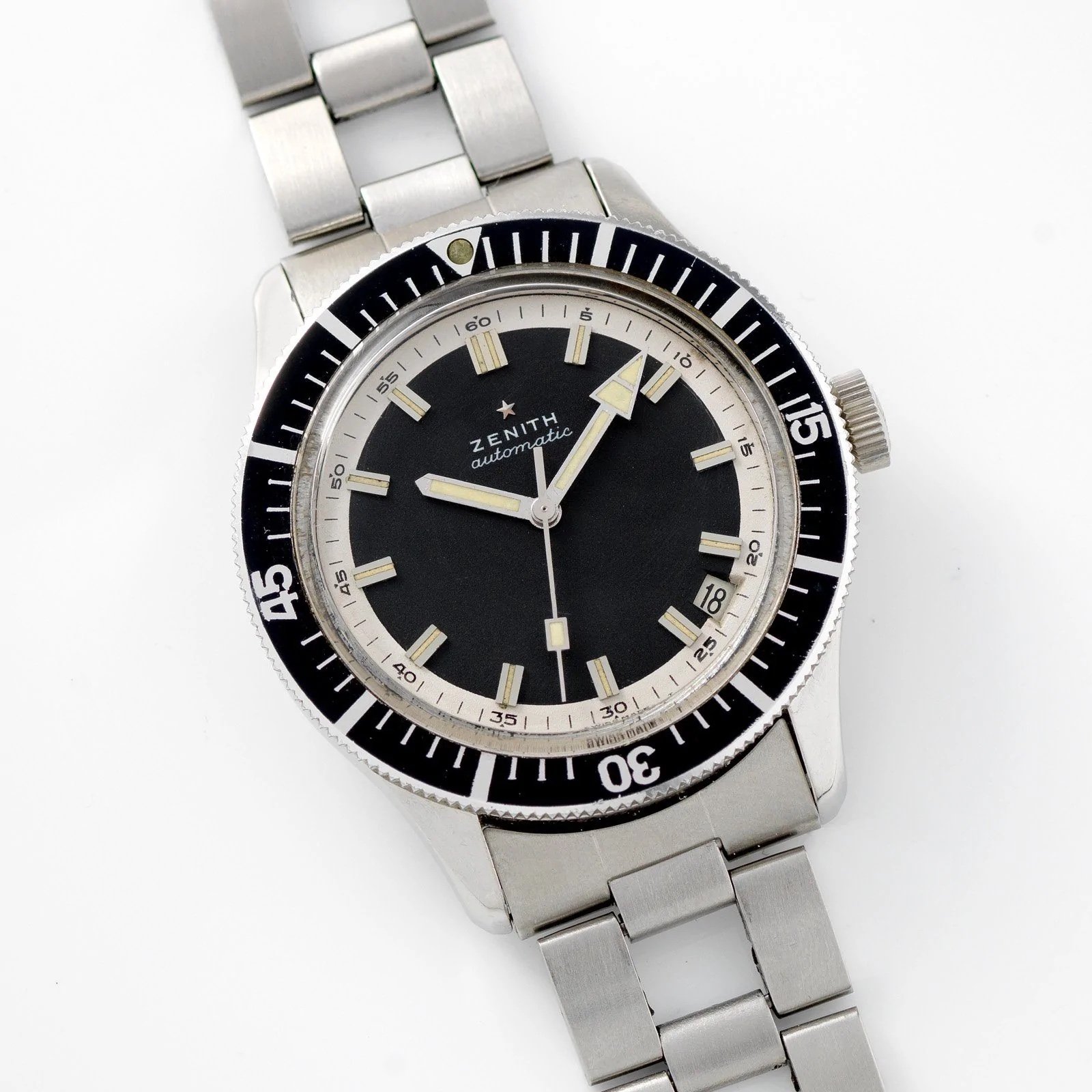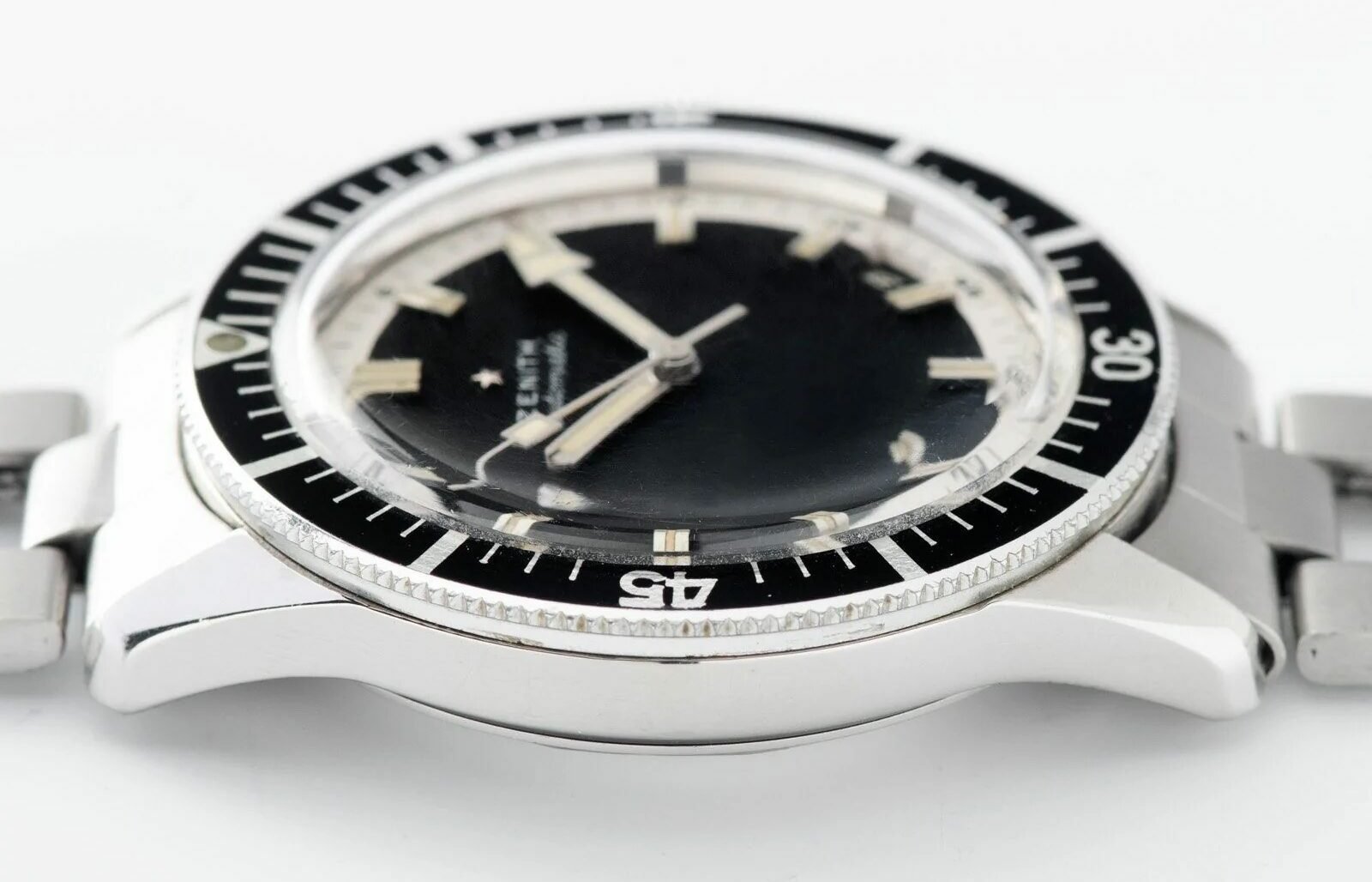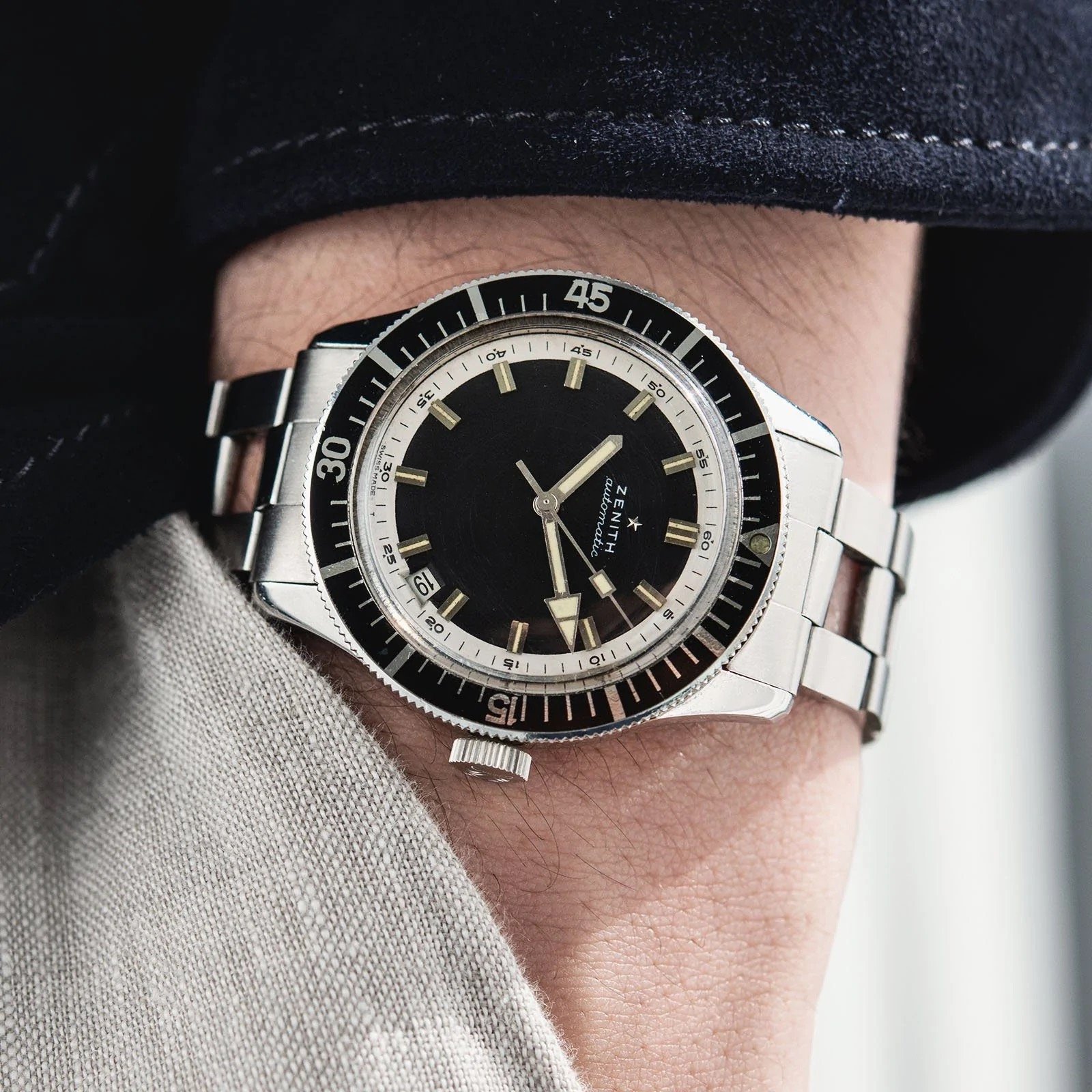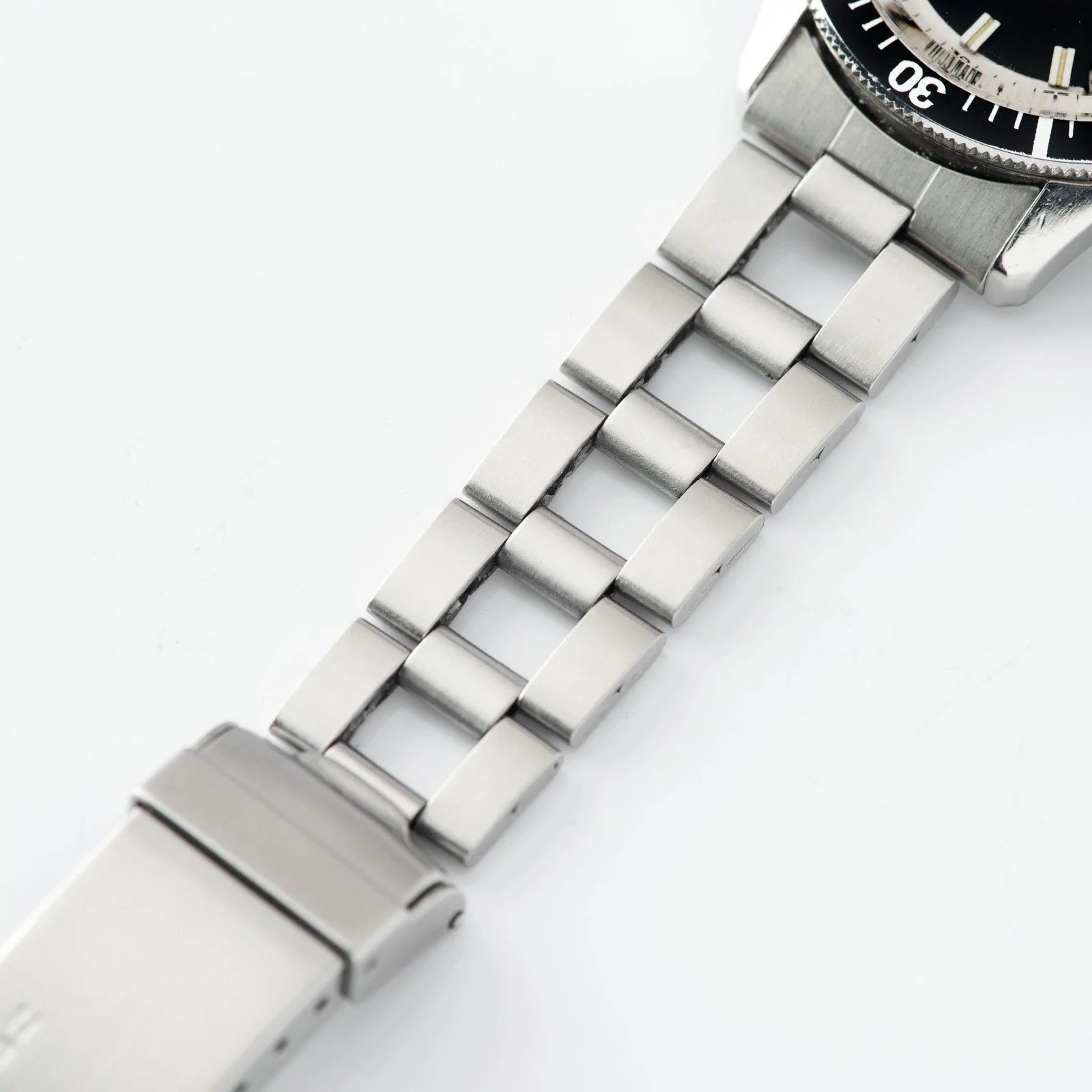Dear Zenith, Bring Back The Sub Sea Ref. A3630
Over the last couple of years, I have found that my love for Zenith runs deep. I love all the modern reissues that the brand has released over time, and the brand-new releases have also been great additions to the collection. It makes Zenith one of my favorite brands of the moment. But that love does not start with the recent releases. Back in the 1960s and ’70s, Zenith already showed a unique eye for design that led to some amazing results. One of them is the Zenith Sub Sea ref. A3630, which was first released in the 1960s. It’s a watch that I would love to see make a return in all its glory.
While the modern Zenith collection is often the reason for my enthusiasm for the brand, the classics have significantly fostered my respect for it even more. In the series of Buying Guide articles that I wrote, it was always a joy to jump into the history of Zenith. And if you do, you will quickly find that the combination of unique designs and great movements dates back to the 1960s. That’s when there was a clear change in a design language that kick-started how we know Zenith today. And in recent times, we have seen many of those classic designs revived to much praise.
Dive watches in the Zenith collection
One of the remarkable things about the current Zenith lineup is that it does not have a proper collection of dive watches. Zenith is mostly known as a chronograph maker, and I love that about the brand too. While dive watches are often a standard in any brand’s collection, Zenith chooses not to include them. And it makes sense as dive watches have never been a great commercial success for the maker of the El Primero. But that doesn’t mean that Zenith hasn’t produced any dive watches in the past. As such, if the brand were to choose to bring back a dive model, a one-time limited edition would likely be the way to go. It’s what Zenith has done successfully with quite a few of its classics, a great example being the first Defy Revival A3642.
One of Zenith’s most famous dive watches is the A277, a diving chronograph. I wrote about the watch in an earlier installment of this series. Another great example is the Zenith Sub Sea A3630 that I picked for this article. A modern version of this stylish diver from the 1960s would be an awesome addition to the current Zenith lineup. Let’s zoom in a bit more on this classic.
The story of the Zenith Sub Sea A3630
The story of the Zenith Sub Sea A3630 is one so similar to those of many watches from the ’60s and ’70s. It’s a story of different iterations, updated movements, service dials, swapped hands, polished cases, and switched bracelets. As a result, you will find different versions of the watch in today’s pre-owned market. But no matter what has been changed, the watch immediately stands out every time.
Finding one of the Sub Sea A3630 models is not always easy as they were not a great commercial success. But if you do, you will own one of the most stylish divers out there from that era. The A3630 was first released in the late 1960s. The Mk 1 version was quickly updated with a new movement, though, leading to the Mk 2 version being released in the early 1970s. For the later Mk 2 versions, Zenith updated the movement once again, resulting in a total of three different movements being used for the A3630.
Different movement, same handsome good looks
What stayed, however, was this instantly recognizable design. The watch features a 39mm stainless steel case that was water-resistant to 120 meters back in the day. The star of the show, however, is the black dial with a white outer ring holding the 60-minute track. I am a sucker for these kinds of dial designs because they have a certain contrast that I love. Another example is the glorious Omega Seamaster 60 “Big Crown” that I wrote about in an earlier installment of this series. Both are great options if you are looking for a great-looking dive watch from the late 1960s that is not one of your standard professional models. Clearly, these two watches were made to look charming and cater to the large crowd of amateur divers.
Adding to that charm was the iconic Gay Frères bracelet that we know from the El Primero trio. But there is an odd thing with these bracelets. The watch was originally fitted with a nicely tapering 20mm Gay Frères bracelet with a diving extension. The width of the second link on each side perfectly matched the end link, and the bracelet wore comfortably thanks to its taper. But if you search for an A3630 nowadays, you will find that most of them are fitted with a smaller 18mm Gay Frères bracelet with 20mm end links, like the one pictured. If you can get your hands on a proper 20mm version, I would definitely recommend it because it just looks better.
Finding the right style of hands
And as I already mentioned, the hands have also been the subject of many lively discussions among Zenith collectors. It is believed that the watch came with three different styles of hands over time. The first is a set of stainless steel arrow hands filled with regular lume, complemented by a seconds hand filled with orange lume. The second style is a set of black arrow hands filled with lume. The third and last style is the least eye-catching as it’s a set of slim stainless steel hands with small segments of lume. I love the first style the most because it adds character to both the design and the colors.
But as you can guess, many of the pieces have been serviced over time, resulting in various executions. And as parts were hard to come by over the years, the mixing of styles happened quite a lot. Another element that Zenith changed over time is the crown. The brand first fitted the watch with an oversized crown and a much slimmer and smaller crown over time. The oversized crown is the way to go for me as, once again, it adds just a touch more character to the watch.
Three different movements for the same watch
As I mentioned, Zenith used a total of three different movements for the watch. The Mk 1 version came equipped with the automatic caliber 2542PC. The Mk 2 version was fitted with the updated automatic caliber 2552PC. Later versions of the Mk 2 saw the brand using the updated caliber 2562PC. The 2552PC was used the most for the Mk 2 and the A3630 in general. The movement operates at 21,600vph, has 23 jewels, and provides a power reserve of 46 hours.
The movement came with a date function that is tucked away between 4 and 5 o’clock, as we have come to know for Zenith’s El Primero movements. I am not always the biggest fan of this placement, but it makes total sense if it’s on a chronograph like the El Primero models. In this case, on a dive watch, it breaks up the super-clean aesthetic of the dial. Just notice how the upper part only features the applied Zenith star, the brand name, and “automatic.” The lower part of the dial features no text at all, and I love that.
A masterful execution
The dial design makes this an absolute stunner of a watch. Its black and white colors create great contrast, and the font type of the 60-minute track looks spot-on, even five decades later. The size is humble but very easy to read, leaving plenty of room for the diving scale to stand out. Furthermore, the lume-filled applied hour markers are another element that gives the watch a great deal of character. I love how they are designed and executed and work together with the steel hands.
Looking at the dial design and the handset, you will quickly understand that the Zenith designers really were on top of their game back in the late 1960s. The quiet black-and-white dial design is stunning to look at and gives room to the hour markers and the hands to shine. That combination not only looks amazing, but it also resulted in great functionality because reading the time is super easy. It makes this a very practical design that also looks great.
A true style statement on the wrist
Overall, I love the look of the Zenith A3630, but on the wrist is where the watch truly shines. Five decades after it was introduced, the A3630 still looks as good as it did back in the late ’60s and early ’70s. With its 39mm size, the watch is still great to wear today. The A3630 could easily be a great vintage daily wearer. But that would require you to find one in good condition. As you’ll understand by now, finding an A3630 can be tough, and finding one in great, original condition is even tougher. Besides replacement parts, one of the things you see often is fading of the bezel insert, resulting in a so-called “ghost bezel”.
Some people love this because it adds vintage charm. Others prefer a non-faded bezel because it makes the watch feel original. While I don’t mind a ghost bezel on some watches, for the A3630, I would prefer a non-faded bezel. You can find a Zenith Sub Sea A3630 for roughly €3K–4K. Compared to other Zenith vintage pieces, that’s a bargain. But I would love it if Zenith brought back the A3630 as a modern limited edition to celebrate its history of creating some of the most stylish dive watches of the 1960s and ’70s. Constructed to today’s standards and fitted with a modern movement, it would be a stunning reintroduction of this stylish Zenith dive watch.
Visit the official Zenith website for more information on the brand’s current collection.
All images, including the cover image, are courtesy of Bulang & Sons.

